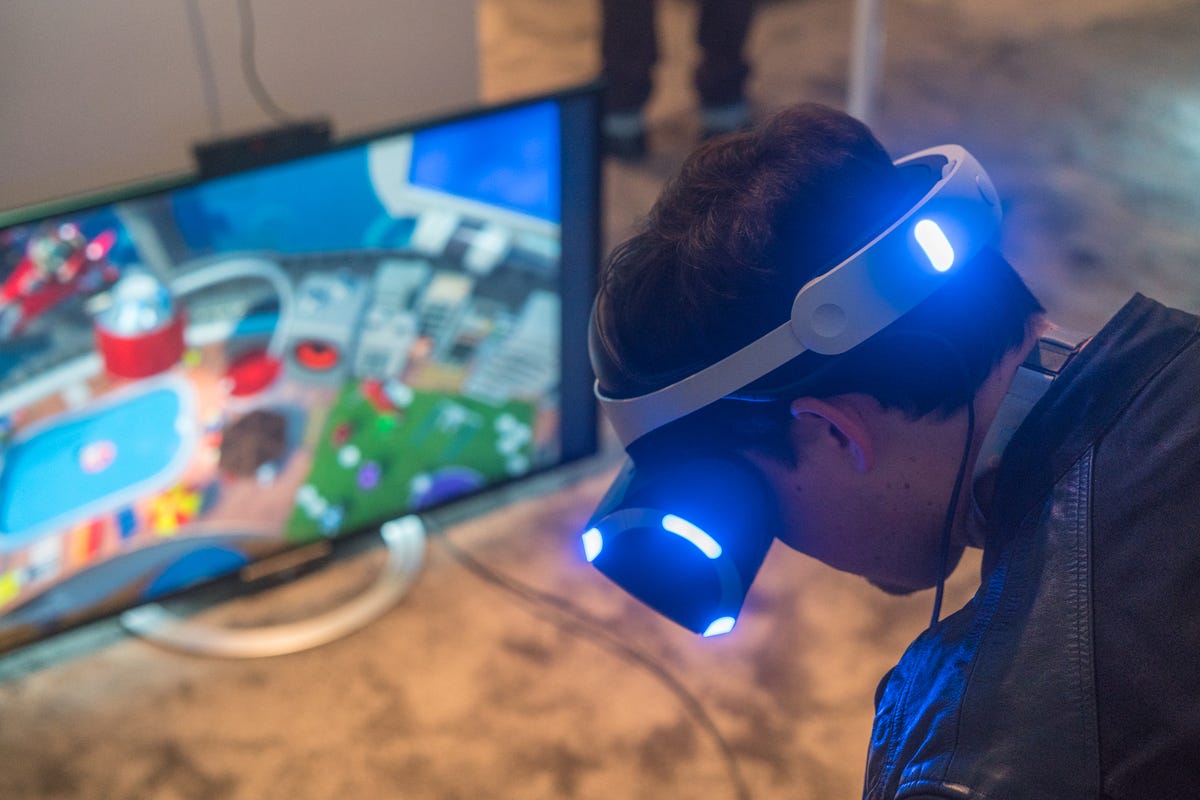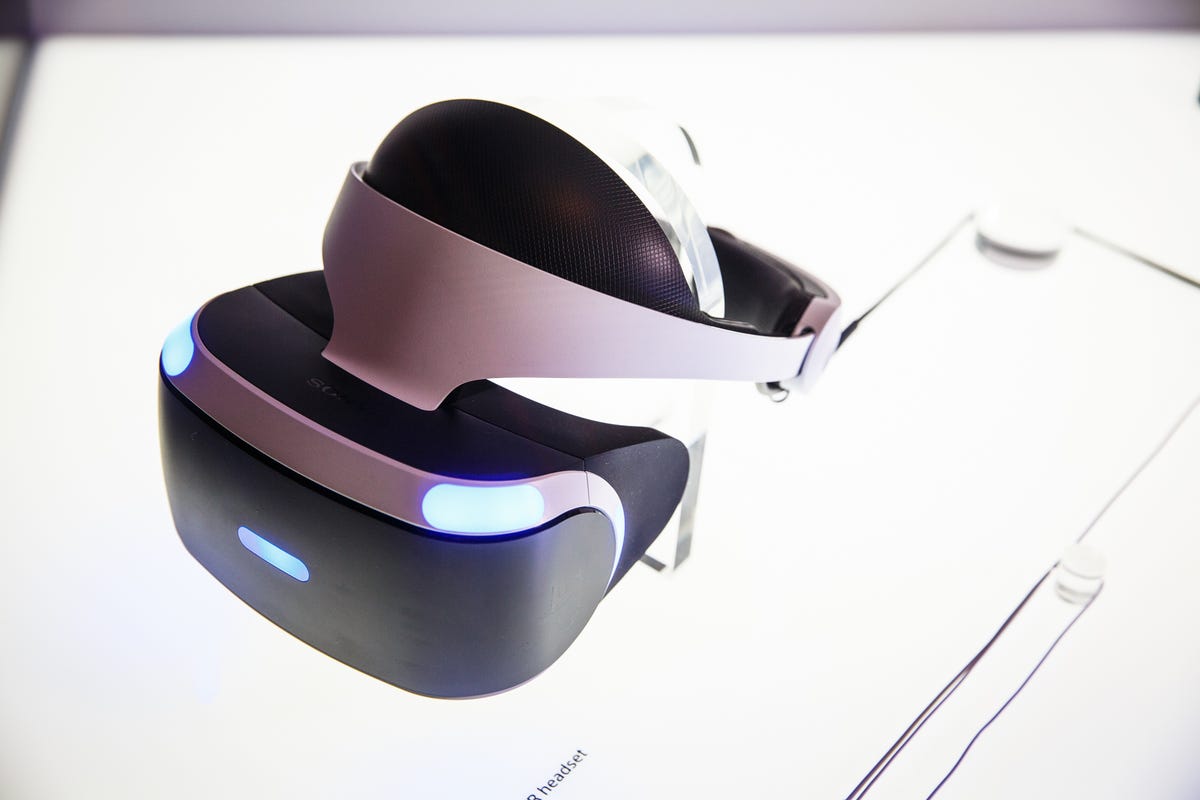Sony needs to do two things: Convince you to buy a virtual reality headset, and convince you that the $399 PlayStation VR is the one you need.
That may be harder than you think.
If you’re reading this story, you’ve probably heard of VR, a technology that uses goggles to strap a screen so close to your face that your mind is tricked into thinking you’ve been transported to a computer-generated world. That world can be anything from a spaceship gliding through the heavens to an underwater shark cage, or even a futuristic shootout between cops and robbers.
What you may not yet know is whose camp you’ll join. Major companies are making VR headsets, from Facebook-owned Oculus VR to HTC, which makes the Vive headset for game developer Valve. There’s also Google, whose Cardboard headset is powered by phones that are already in the hands of millions of newspaper readers and Verizon customers. And then there’s Sony.
Sony’s PlayStation VR headset will cost you $399 and it’s coming in October (pictures)






Sony’s PlayStation VR is designed to work with the PlayStation 4 video game console, which means if you’re already a gaming fan, you’ll think Sony for your VR fix. PlayStation VR offers slightly lower quality images than Oculus or HTC, but it’s also much cheaper.
While HTC charges $799 (£689 and $899 in Australia) for the Vive headset and Oculus charges $599 (£499, AU$649) for the Rift — neither of which include the gaming PC they need — Sony’s device will cost $399 (£349, AU$550) and require a comparatively inexpensive $350 (£300, AU$480) PlayStation 4 to power it.

 Enlarge Image
Enlarge ImageNate Ralph/CNET
Sony’s rivals do have a bit of a head start. The PlayStation VR will go on sale in October, well after Oculus and HTC, which are launching their products on March 28 and April 5, respectively. Originally, Sony promised its VR headset would arrive in the first half of 2016, so October is a significant delay.
What you get in the package: a tethered headset, a whole lot of cables, and a small box to convert images from the PlayStation 4 into ones suitable for VR headgear. Importantly, it doesn’t come with a camera, which is required to track a user’s head and retails for $60. The system won’t work without the camera.
It also doesn’t come with any controllers to get user’s hands into virtual reality: for that, there’s a pair of optional $50 PlayStation Move wireless wands, also sold separately. The gamepad that comes with a PlayStation 4 will work for some titles. A Sony rep confirmed that bundles containing the camera and wand controllers will be available by launch.
The pitch
What’s unclear is how many people want to actually buy these headsets in the first place. Sales of various types of computer-connected goggles, games, apps and other accessories are expected to hit $120 billion by 2020, according to acquisitions advisory firm Digi-Capital.
To get there, companies are taking a shotgun approach to development, creating different devices, software and apps to entice you to try it. According to Sony, there are 230 different software developers working on PlayStation VR experiences alone.


Josh Miller/CNET
Some of the highlights at a recent showcase: Rez Infinite, a game where players soar through a trippy neon landscape, firing lasers in time to a pulsating beat; Allumette, a rich virtual film with stop-motion-like animation; Rigs, a intriguing combination of basketball and giant robot deathmatch; and Battlezone, a ’80s arcade game updated for the modern era, placing you inside the cockpit of a nimble hover tank.
Still, even the industry’s biggest backers are preaching calm. Facebook CEO Mark Zuckerberg, who drew the world’s attention to VR when he bought Oculus for $2 billion two years ago, frequently tells investors he expects sales to be slow at first.
“These kind of new platforms take a long time to develop,” he said on a November conference call, describing how it took more than five years for smartphones to win over a mass audience. Even so, Zuckerberg believes “virtual reality and augmented reality could be the next big computing platform.”
“Virtual reality represents a new frontier for gaming,” said Sony Computer Entertainment President and CEO Andrew House on Tuesday, after announcing the device’s price at a San Francisco event. “Once again, PlayStation will be leading the charge to advance the future of interactive entertainment.”
Now, Sony needs to find people willing to brave the VR wilderness. New frontiers are hard.



